Abstract
Mouse monoclonal antibody TA99 detects a 70-kDa pigmentation-associated glycoprotein in human melanoma cell lines. The antigen cannot be detected on the cell surface by sensitive rosetting techniques or absorption studies, nor can it be detected as a secreted product in culture fluids. Contrary to expectation, 125I-labeled TA99 specifically localized to pigmented human melanoma transplants in nu/nu mice; no localization to nonpigmented melanoma or control tumors was found. Tumor imaging was initially obscured by circulating 125I-labeled TA99 during the first 6 days after antibody injection. With clearance of 125I-labeled TA99 from the blood (half-life, 4-7 days), specific tumor images could be clearly defined by day 13. Due to the persistence of 125I-labeled TA99 at the tumor site (8.9% of the injected dose at 1 week and 4.6% at 8-10 weeks), images were obtainable for up to 10 weeks. At 8-10 weeks, the tumor/blood ratio was 10(4)-10(5), and the tumor/normal tissue ratio ranged from 10(2) to 10(5). In view of these findings, antibodies detecting intracellular antigens may have a role in tumor imaging and therapy.
Full text
PDF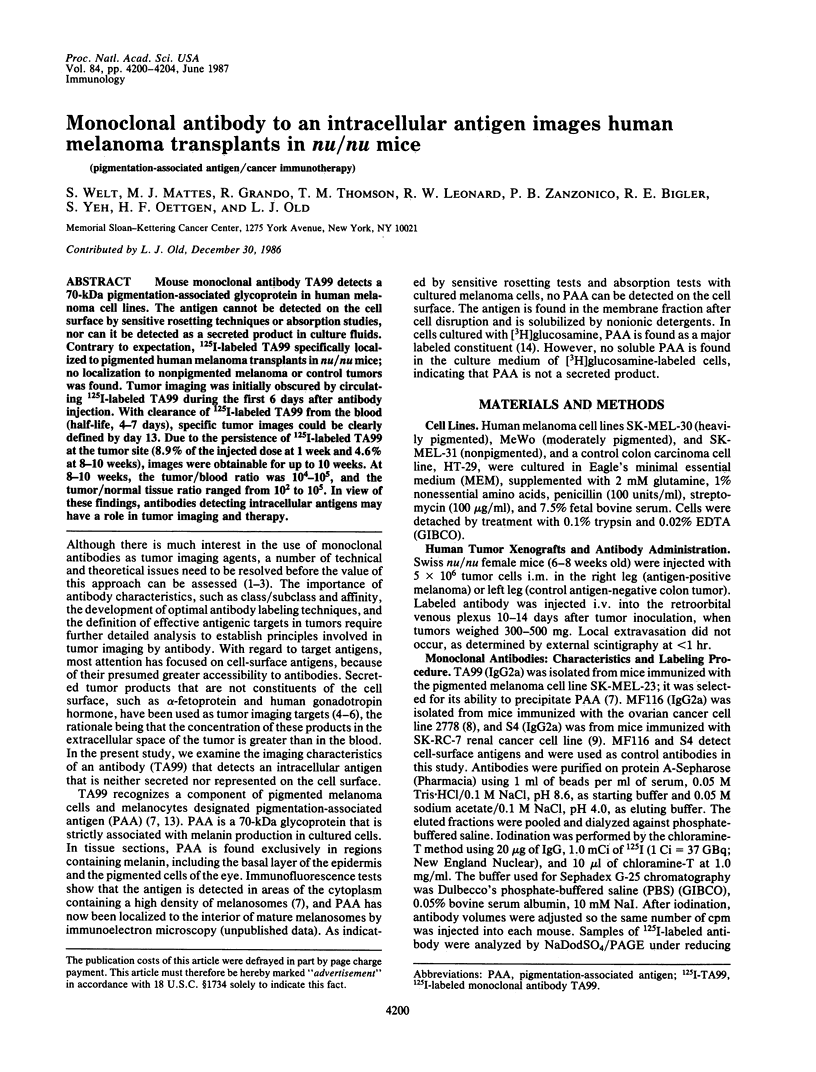
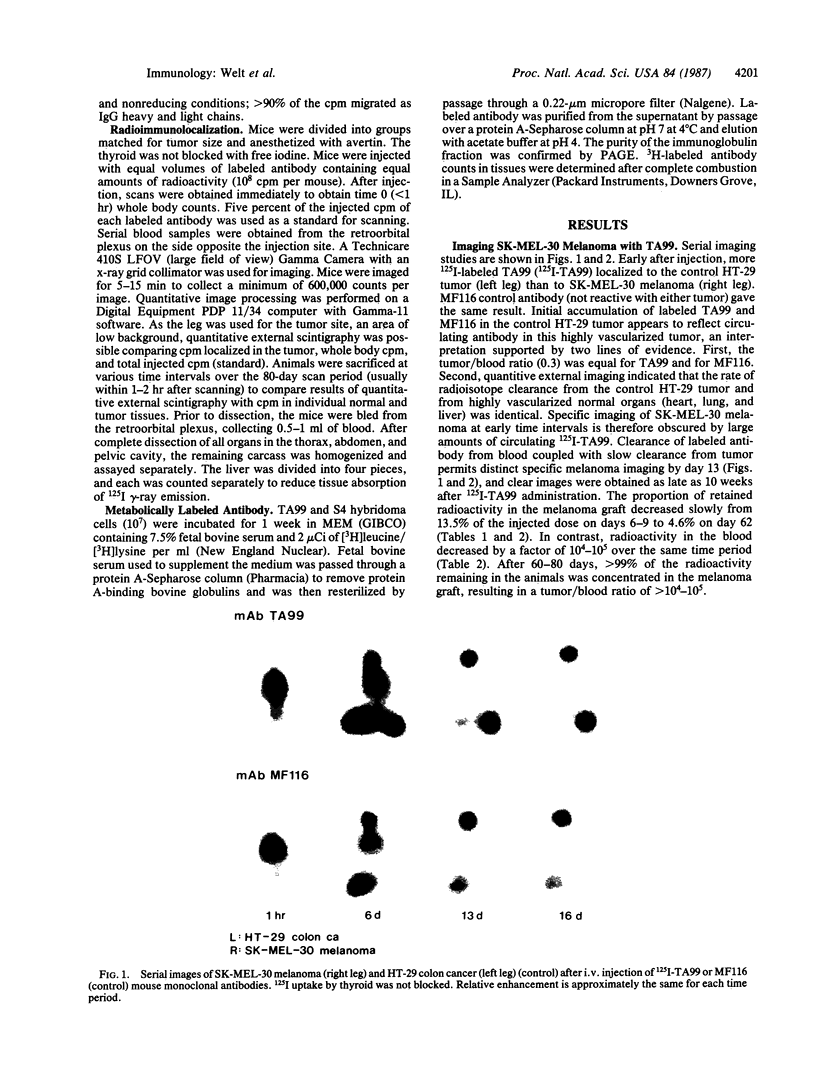
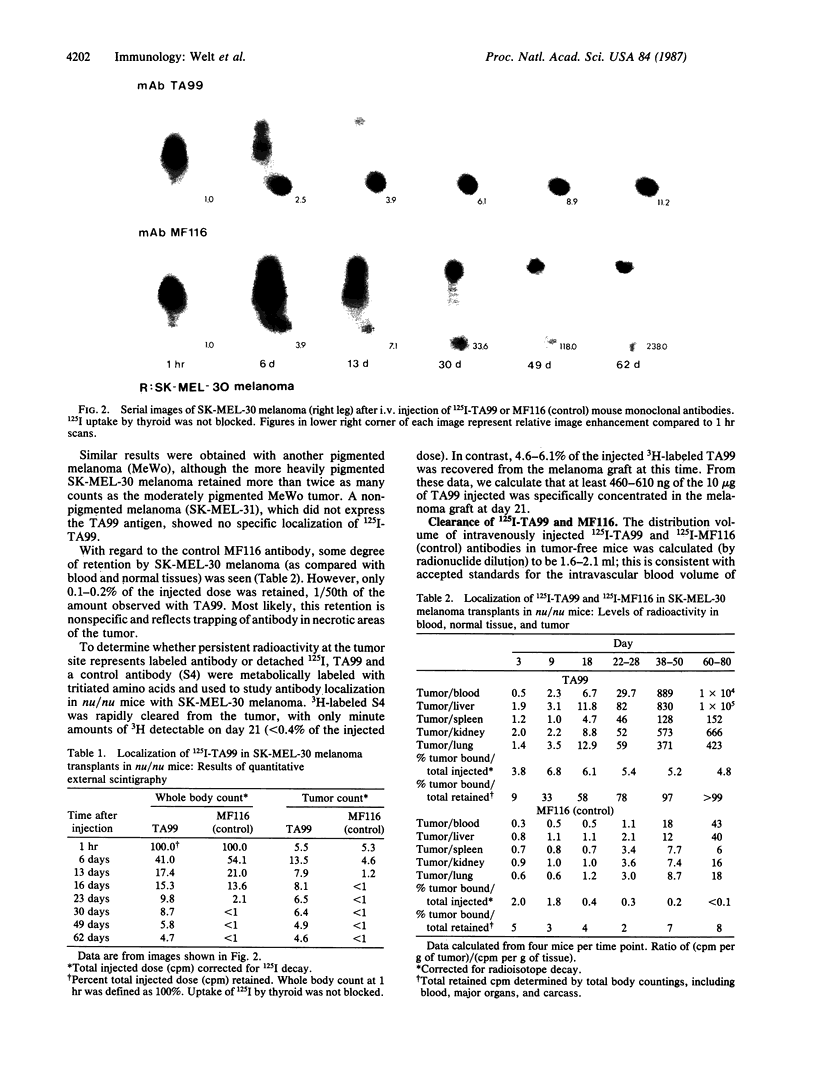
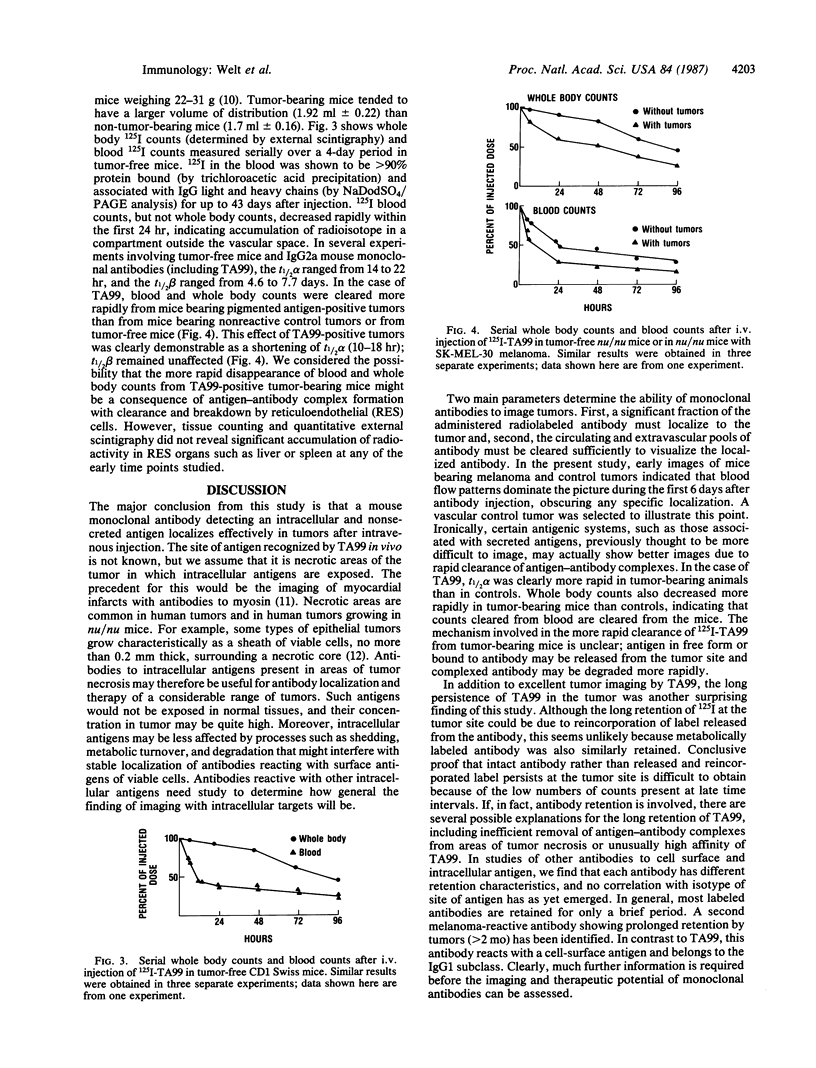
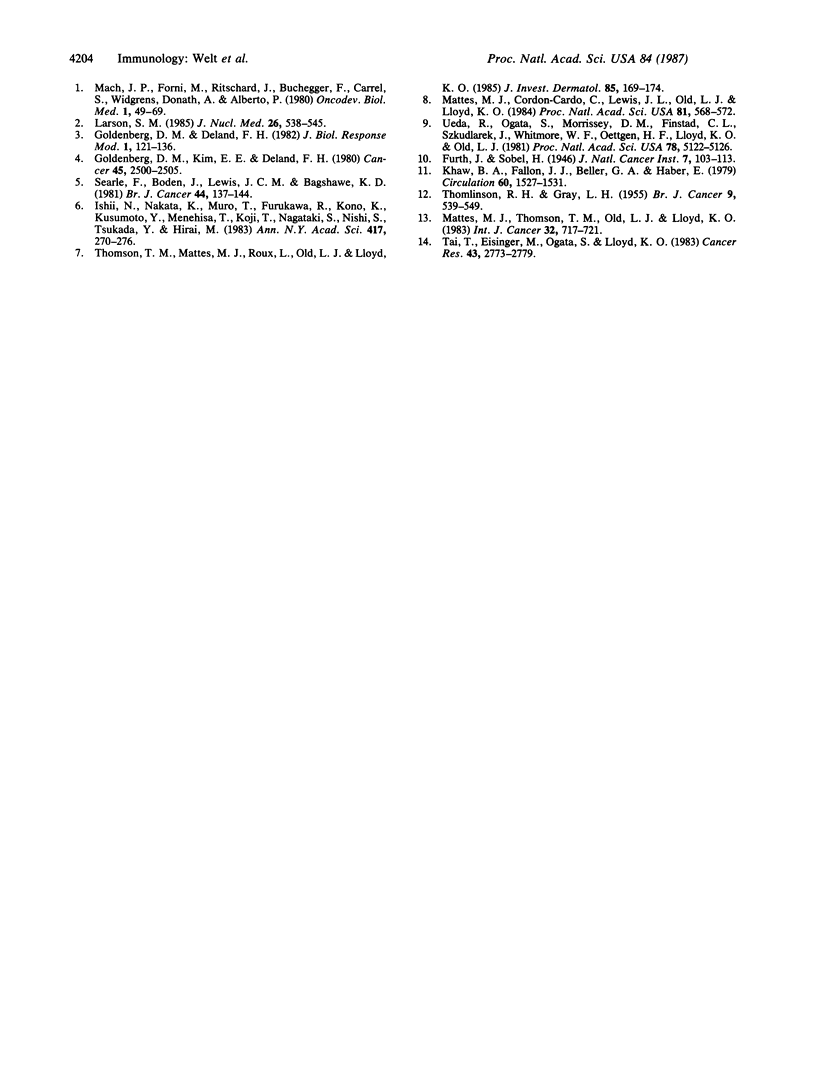
Images in this article
Selected References
These references are in PubMed. This may not be the complete list of references from this article.
- Goldenberg D. M., Kim E. E., Deland F., Spremulli E., Nelson M. O., Gockerman J. P., Primus F. J., Corgan R. L., Alpert E. Clinical studies on the radioimmunodetection of tumors containing alpha-fetoprotein. Cancer. 1980 May 15;45(10):2500–2505. doi: 10.1002/1097-0142(19800515)45:10<2500::aid-cncr2820451006>3.0.co;2-j. [DOI] [PubMed] [Google Scholar]
- Ishii N., Nakata K., Muro T., Furukawa R., Kono K., Kusumoto Y., Munehisa T., Koji T., Nagataki S., Nishi S. Radioimmunodetection of cancer using antibodies to alpha-fetoprotein and carcinoembryonic antigen. Ann N Y Acad Sci. 1983;417:270–276. doi: 10.1111/j.1749-6632.1983.tb32870.x. [DOI] [PubMed] [Google Scholar]
- Khaw B. A., Fallon J. T., Beller G. A., Haber E. Specificity of localization of myosin-specific antibody fragments in experimental myocardial infarction. Histologic, histochemical, autoradiographic and scintigraphic studies. Circulation. 1979 Dec;60(7):1527–1531. doi: 10.1161/01.cir.60.7.1527. [DOI] [PubMed] [Google Scholar]
- Larson S. M. Radiolabeled monoclonal anti-tumor antibodies in diagnosis and therapy. J Nucl Med. 1985 May;26(5):538–545. [PubMed] [Google Scholar]
- Mach J. P., Forni M., Ritschard J., Buchegger F., Carrel S., Widgren S., Donath A., Alberto P. Use of limitations of radiolabeled anti-CEA antibodies and their fragments for photoscanning detection of human colorectal carcinomas. Oncodev Biol Med. 1980 Aug;1(1):49–69. [PubMed] [Google Scholar]
- Mattes M. J., Cordon-Cardo C., Lewis J. L., Jr, Old L. J., Lloyd K. O. Cell surface antigens of human ovarian and endometrial carcinoma defined by mouse monoclonal antibodies. Proc Natl Acad Sci U S A. 1984 Jan;81(2):568–572. doi: 10.1073/pnas.81.2.568. [DOI] [PMC free article] [PubMed] [Google Scholar]
- Mattes M. J., Thomson T. M., Old L. J., Lloyd K. O. A pigmentation-associated, differentiation antigen of human melanoma defined by a precipitating antibody in human serum. Int J Cancer. 1983 Dec 15;32(6):717–721. doi: 10.1002/ijc.2910320610. [DOI] [PubMed] [Google Scholar]
- Searle F., Boden J., Lewis J. C., Bagshawe K. D. A human choriocarcinoma xenograft in nude mice; a model for the study of antibody localization. Br J Cancer. 1981 Aug;44(2):137–144. doi: 10.1038/bjc.1981.163. [DOI] [PMC free article] [PubMed] [Google Scholar]
- THOMLINSON R. H., GRAY L. H. The histological structure of some human lung cancers and the possible implications for radiotherapy. Br J Cancer. 1955 Dec;9(4):539–549. doi: 10.1038/bjc.1955.55. [DOI] [PMC free article] [PubMed] [Google Scholar]
- Tai T., Eisinger M., Ogata S., Lloyd K. O. Glycoproteins as differentiation markers in human malignant melanoma and melanocytes. Cancer Res. 1983 Jun;43(6):2773–2779. [PubMed] [Google Scholar]
- Ueda R., Ogata S., Morrissey D. M., Finstad C. L., Szkudlarek J., Whitmore W. F., Oettgen H. F., Lloyd K. O., Old L. J. Cell surface antigens of human renal cancer defined by mouse monoclonal antibodies: identification of tissue-specific kidney glycoproteins. Proc Natl Acad Sci U S A. 1981 Aug;78(8):5122–5126. doi: 10.1073/pnas.78.8.5122. [DOI] [PMC free article] [PubMed] [Google Scholar]






